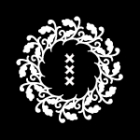Pecha Kucha Night @Mediamatic, Amsterdam
 Here I am, sitting on a couple of pillows in the front row of Mediamatic’s jam-packed main room. In just a few minutes, the Pecha Kucha Night Amsterdam Volume 15 will start. 12 presentations given at lightning speed (20 slides of 20 seconds each). Amsterdam is one of the 360 worldwide cities organizing Pecha Kucha nights and it’s joining Dallas and Kosice as other places hosting similar events today.
Here I am, sitting on a couple of pillows in the front row of Mediamatic’s jam-packed main room. In just a few minutes, the Pecha Kucha Night Amsterdam Volume 15 will start. 12 presentations given at lightning speed (20 slides of 20 seconds each). Amsterdam is one of the 360 worldwide cities organizing Pecha Kucha nights and it’s joining Dallas and Kosice as other places hosting similar events today.
Menno van der Veen got things rolling with his “Welcome to Youtopia” presentation. Youtopia is, according to Menno, our own little, cozy world composed of iPhone, offices, fetishes, social network followers, charity of choice, complex and inconsistent collections of stories. This fantasy can be shattered at any time either by economic crises and changing political regimes, to name just a few of the looming dangers. How to handle these? By dissolving Youtopia and caring about bigger problems. Easy to say, hard to do. On to the next one!
Elke Veltman, an Eindhoven-based performance artist, focused on the distinction between public and private by tiptoeing on the boundaries between the two. Her performances include transforming an elevator into her living room (complete with hamster and IKEA wallpaper), sitting in the window of Breda Centraal Station doing much of the same while commuters passed on by or stopped in bewilderment, asking 49 families in a building to let her watch TV with them and – my personal favourite – wearing a ridiculously long dress spread across train seats to test people’s reactions. Dutchies shied away while Brazilians had a blast sitting on it, striking up conversations with the non-Portuguese speaking Elke. Surprising? Up to you.
Femke Agema, an emerging designer, talked about her highly unwearable, but artistically intriguing outfits. Inspired by a tele-shopping commercial in which a woman exults the benefits of a banal pillow, , her art school graduation project consisted of items meant to protect their wearer from intrusive advertising such as over-sized hoods or sheltering pillow skirts. For another project, Femke made use of heart shapes – representing two lovers – to document the development of a relationship; heart-shaped pieces that grow until they become one. Her latest collection, called Totem, relates to Femke’s addiction to Facebook and how it presents mixed, edited images of people instead of real identities; she proceeded to translate this fragmentation into 2m-tall totem poles which later served as a source for slightly more wearable clothes showcased at Maastricht’s Fashion Clash. More modern art then haute couture, this has been the highlight so far.
Photographer Jos Kraaijeveld wondered: if everything seems to be made in China, are those busy people ever to be seen on the streets? If so, what they are doing? He went and found out, photographing scenes like empty amusement parks, but also long queues for embarking on a boat trip. His newest project, called “Unseen Amsterdam”, zooms in on common sights ignored by pedestrians. A rather hit-and-miss series, obsessed with lines and finding aestheticism in geometry. On the upside, the Osdorp shot of Mediterranean-looking white houses is wicked.
Hansje van Halem, an independent graphic designer, gave a remarkably funny and honest account of working with the TNT Post on two types of stamps which were then mass produced. Interesting insights into the difficulties of simplicity.
Artist Saron Paz used the example of food as the last resort in terms of physical, sensual experiences as opposed to the disappointing reality; we’re always told what to not do, instead of what we can do. He’s trying to fix that and design things that evoke creativity and curiosity. “Mass Mess”, for example, is an exploration of a different kind of working experience; before sitting on a chair, one must bring it upwards and find a balance with the inflatable carpet it was placed on. “Dare” project sought to challenge fear, pain and discomfort by making its participants shout a statement then take a leap of faith off 3m-ramp with a bunch of dodgy mattresses piled up underneath.Humorous and entertaining through and through.
Rietveld alum Elmo Vermijs followed with an architecture project entitled “Settlingtankkitchen”, which was build on a Tilburg water purification station. Made out of second-hand wood and put together mostly by Elmo, this breezy pavilion is a space for eating, cooking and just experiencing the landscape. In his future work, the up-and-coming architect will produce a DJ pancake set and a collective swing space for 50 people. Sounds like fun.
The evening was wrapped up by Daphne van der Kroft of Bits of Freedom who praised the benefits of being part of the ‘Internet generation’ but cautiously warned against loss of freedom online, which, according to the organization she represented, means a lack of privacy and malicious use of personal data. Daphne happily reported that BoF’s little revolution was going in the right direction: several points of the Bits of Freedom’s digital freedom manifesto were included in a government report, suggesting that politicians are starting to take these matters seriously. About time!